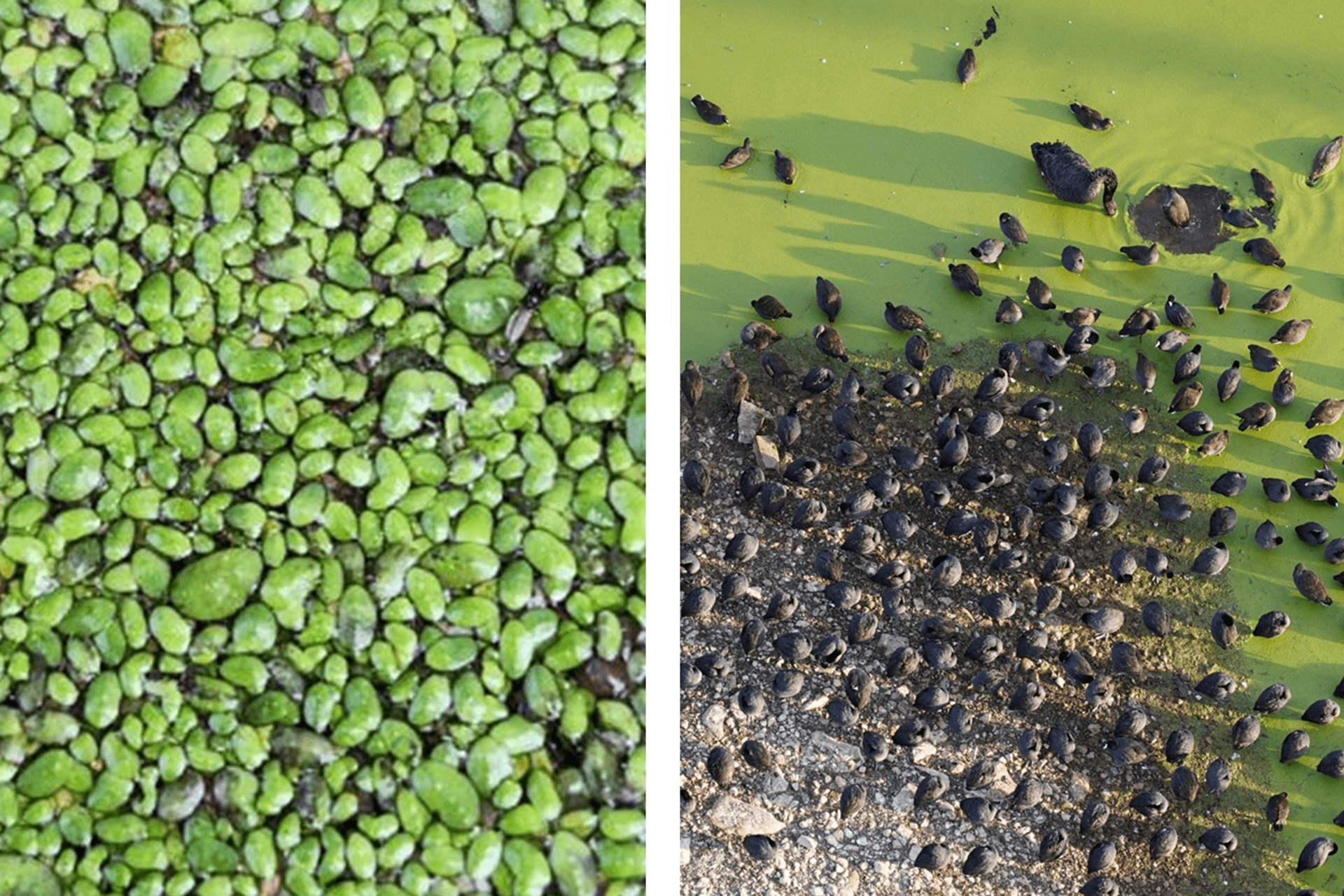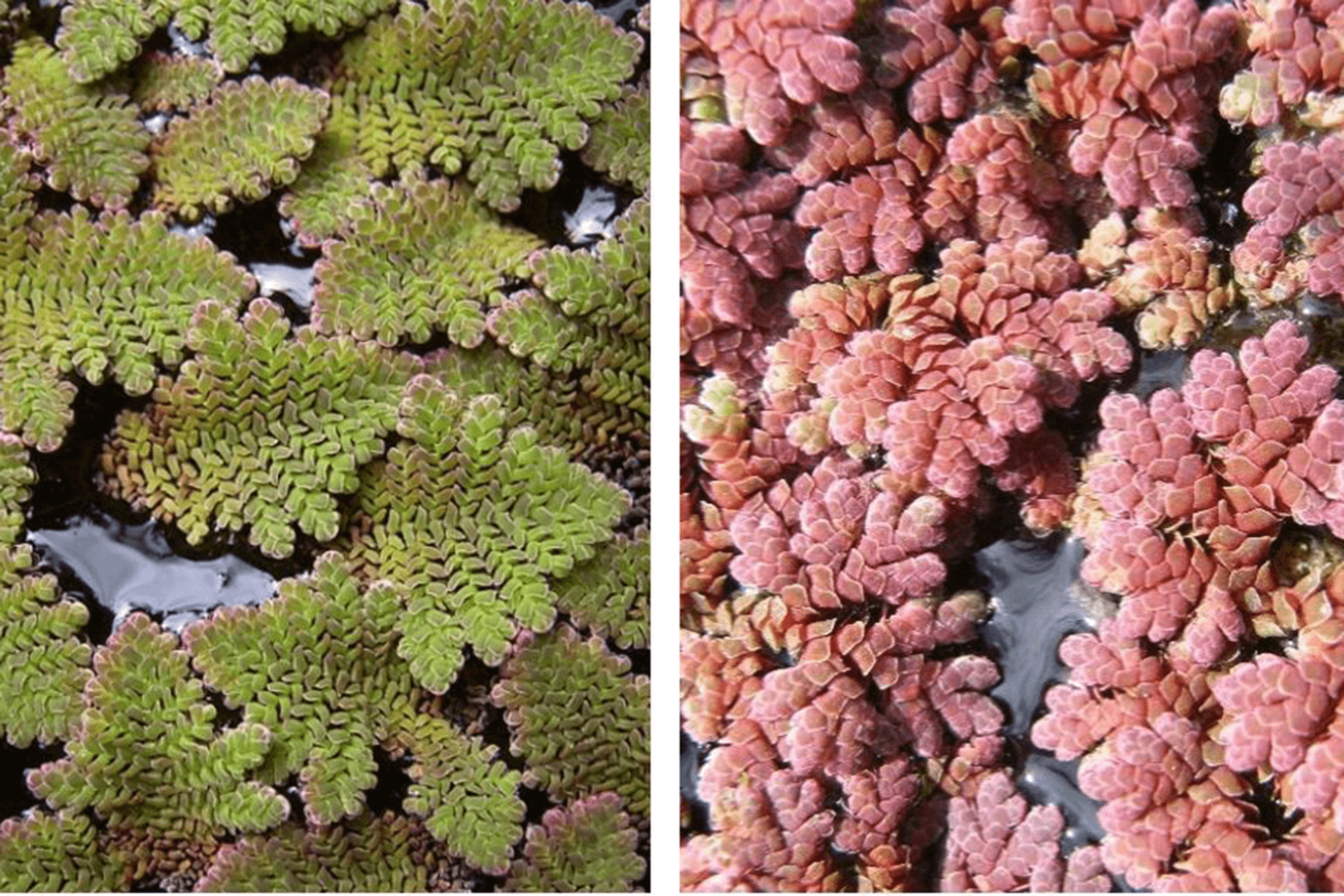Duckweed and Azolla equals feed and fertiliser
Floating aquatic plants found in freshwater wetlands of Sydney Olympic Park do more than just float…
Duckweeds
The common name duckweed is spot on in that many ducks like to eat it, but the latter part of the name is misleading as these plants are not classified as weeds. Duckweeds including Lemna, Spirodela and Wolffia species are all native.
They are tiny, free-floating plants that can be seen on the surface of still or slow-moving water bodies, sometimes forming dense green mats. Duckweeds reproduce by budding and fragmentation, and are some of the smallest plants known to do so!
In the right amount, duckweed is beneficial in ponds and wetlands. These tiny plants provide shelter for aquatic invertebrates and are an excellent source of food for birds.
Visit the Brickpit Ring Walk to see waterbirds feasting on the vibrant green duckweed mats on the surface of the Brickpit Reservoir.

Free-floating duckweed (left) can form large mats that provide abundant food to many waterbirds (right).
Azolla
Azolla species present at Sydney Olympic Park are tiny native Australian ferns. Their fronds can be seen floating on the surface of still or slow-moving waterbodies individually or as large mats.
These fronds appear green or red depending on exposure to the sun, making it a popular decorative feature in garden ponds. Colouring is usually green in shady conditions but become reddish when exposed to direct sunlight.
Of the two species present in the Park, you can tell them apart by their rootlets. Azolla pinnata has tiny rootlets that dangle below the surface of the water, whilst Azolla filiculoides has no rootlets.
In the right amount, Azolla is beneficial in ponds and wetlands. These tiny plants support nitrogen-fixing cyanobacterium in their fronds and release this nitrogen when they decay. For this reason, it is often grown in paddy fields in Asia as a fertiliser!

Azolla fronds support nitrogen-fixing cyanobacterium and release this nitrogen when they decay.
Part of a bigger picture
Duckweed and Azolla are part of a wide variety of wetland plant species that grow at Sydney Olympic Park. If you’d like to see more, check out our Wetland Plant Species List.